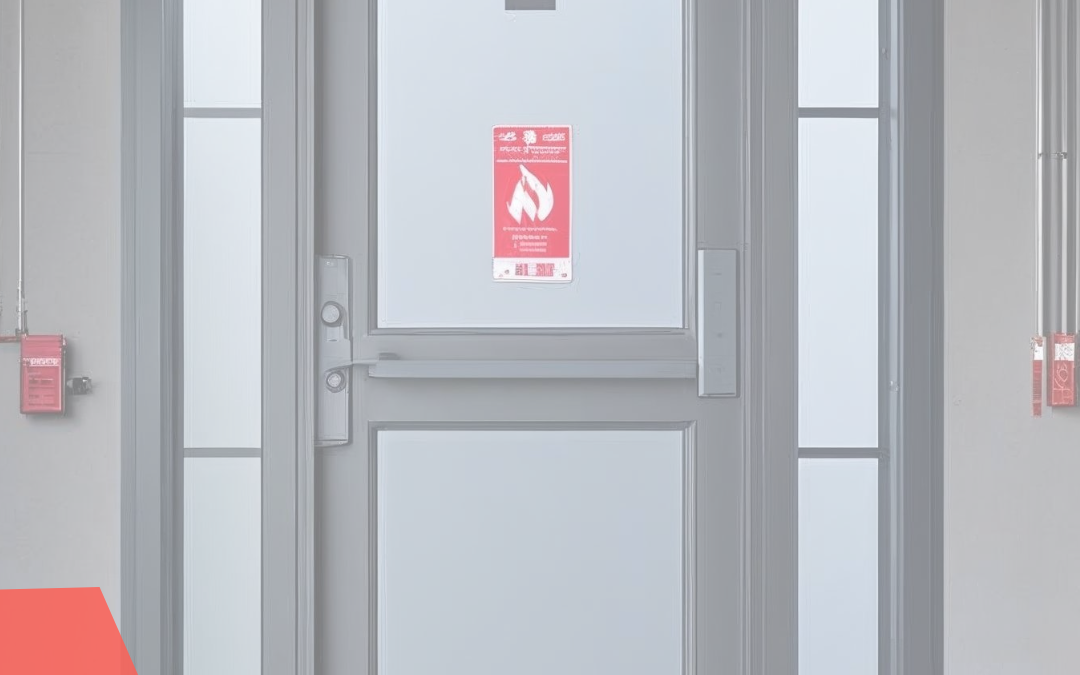Fire doors are more than just a component of a building’s structure; they are vital safeguards in the event of a fire, acting as life-saving barriers that enable safe evacuation. They work through a process called compartmentalisation, containing fire and smoke to buy critical escape time. Understanding fire door ratings, such as FD30, FD60, FD90, FD120, and FD240, is essential, as these numbers indicate the minimum time a door can withstand fire. Selecting the right fire door rating is crucial not only for safety but also for compliance with building regulations. TECL stands out as a leading expert in fire door solutions, offering comprehensive guidance and services to ensure that every installation meets both safety standards and regulatory requirements.
Demystifying Fire Door Ratings
Understanding fire door ratings is crucial for ensuring the safety and compliance of buildings. This section will explore the meaning behind FD ratings, the importance of smoke protection, and explain standard fire door ratings.
Understanding FD Ratings
Fire door ratings, denoted by “FD” followed by a number, indicate the minimum duration a door can resist fire during testing. The number represents the time in minutes.
For example, an FD30 door is designed to withstand fire for at least 30 minutes. This rating system helps building managers and safety professionals choose the appropriate level of protection for different areas within a structure.
It’s important to note that these ratings are based on standardised tests and represent minimum performance levels. In real-world fire scenarios, actual performance may vary depending on factors such as installation quality and maintenance.
The Importance of Smoke Protection
Smoke protection is a critical aspect of fire safety, often indicated by an ‘s’ suffix in fire door ratings (e.g., FD30s). This additional feature is crucial for preventing the spread of toxic fumes.
Smoke can be more lethal than flames in many fire situations, making smoke-resistant doors essential for safe evacuation. These doors are designed with special seals that expand when exposed to heat, effectively blocking the passage of smoke.
In escape routes and corridors, smoke protection is particularly vital. It ensures that occupants have clear pathways to exit the building safely during a fire emergency.
Common Fire Door Ratings Explained
Fire door ratings range from FD30 to FD240, each serving specific purposes in different building types and risk levels.
FD30 doors are commonly used in residential properties and low-risk commercial areas. They provide 30 minutes of fire resistance, suitable for most homes and small businesses.
FD60 doors offer 60 minutes of protection and are typically found in larger commercial buildings, schools, and hospitals. They’re used in areas with higher fire risks or complex escape routes.
FD90 and FD120 doors provide extended protection for 90 and 120 minutes, respectively. These are often used in high-risk environments, healthcare facilities, and multi-occupancy buildings where evacuation may take longer.
FD240 doors offer the highest level of protection at 240 minutes. They’re reserved for extremely high-risk environments or critical infrastructure installations.
Choosing the Right Door
Selecting the appropriate fire door involves more than just understanding ratings. This section will examine the factors that influence door selection and outline strategies to ensure compliance and safety.
Factors in Door Selection
Choosing the right fire door depends on various factors, including building type, location within the structure, and fire risk assessment results.
The building’s purpose plays a crucial role. For instance, a hospital might require higher-rated doors compared to a small office due to the potential difficulty in evacuating patients.
A door’s location within the building is equally important. Doors in high-risk areas like kitchens or near flammable materials storage may need higher ratings than those in low-risk zones.
Fire risk assessments, which are legally required for many non-domestic buildings, provide essential guidance for door selection. These assessments identify specific risks and recommend appropriate fire safety measures.
Ensuring Compliance and Safety
Compliance with local building regulations and safety standards is paramount when selecting fire doors. In the UK, doors must meet standards such as BS 476 or EN 1634.
It’s crucial to remember that the fire door rating applies to the entire doorset, not just the door itself. This includes the frame, intumescent seals, smoke seals, hinges, and closers.
Regular inspections and maintenance are essential to ensure ongoing compliance and safety. This includes checking for damage, ensuring proper closure, and verifying that all components remain in good working order.
The Role of Professional Installation
Professional installation is crucial for the effectiveness of fire doors. This section will highlight why expert hands are needed for installation and the importance of regular maintenance.
Installation Needs Expert Hands
Professional installation is critical for fire doors to function as intended. Improper installation can compromise the door’s integrity, rendering it ineffective in a fire emergency.
Expert installers understand the complexities of fire door systems, including the correct fitting of seals, hardware, and closing mechanisms. They ensure that gaps around the door are within acceptable tolerances to maintain fire resistance.
Accredited professionals, like those at TECL, are trained to install fire doors according to manufacturer specifications and regulatory requirements. This expertise is crucial for ensuring that the door will perform as rated in the event of a fire.
Importance of Regular Maintenance
Regular maintenance is essential to keep fire doors functioning correctly over time. This includes routine inspections and necessary repairs or replacements.
Key aspects of maintenance include checking the door’s operation, inspecting seals and hardware, and ensuring the door closes properly from any open position. Any damage or wear should be addressed promptly to maintain the door’s fire-resistant properties.
Professional maintenance services, such as those offered by TECL, can provide comprehensive checks and documentation, ensuring that fire doors remain compliant with safety regulations throughout their lifespan.
